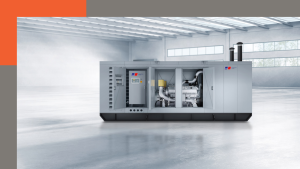When it comes to standby or backup power, reliability is everything. Whether you’re operating a hospital, data centre, industrial facility, or a commercial property, your generator must be ready to perform at full capacity when needed. This is where load bank testing plays a critical role. Regular testing ensures that your generator performs efficiently, reliably, and safely, preventing costly downtime and unexpected failures.
What is Load Bank Testing and Why It’s Essential for Generator Reliability
Load bank testing is the process of simulating electrical loads on a generator to verify its performance under real-world operating conditions. Instead of waiting for an actual power outage, this controlled test helps determine whether your generator can handle the demands placed on it.
Generators that sit idle for long periods often face issues such as wet stacking, carbon build-up, and inefficient combustion. Load bank testing prevents these problems by operating the generator at its intended load, maintaining internal cleanliness and ensuring the engine components remain functional.
Why it’s essential:
- Validates generator performance
- Identifies underlying issues before a real outage
- Complies with industry regulations and safety standards
- Extends the lifespan of the generator
How Load Bank Testing Helps Prevent Generator Failures and Downtime
Unscheduled power outages can cause significant operational and financial losses. Load bank testing helps reduce this risk by:
- Identifying weaknesses: Tests engine cooling, fuel systems, alternators, and control systems under full load.
- Preventing wet stacking: Especially in diesel generators, low-load running can lead to unburnt fuel residues; testing at full load burns this off.
- Ensuring battery and alternator health: Verifies the charging system and electrical output stability.
- Improving emergency readiness: Your generator will be primed for instant response in case of a power failure.
Ultimately, load bank testing gives you confidence that your generator will perform exactly as needed when it matters most.
The Process of Load Bank Testing: What to Expect
While each testing process may differ slightly depending on the generator type and size, a typical load bank test follows these steps:
- Pre-inspection: Technicians check fluid levels, battery charge, and any visible damage or wear.
- Connection to Load Bank: The generator is connected to a resistive or reactive load bank.
- Step Load Application: Load is gradually applied in steps (e.g., 25%, 50%, 75%, 100%) to assess generator response.
- Monitoring and Evaluation: Parameters like voltage, frequency, coolant temperature, and fuel pressure are monitored.
- Post-Test Analysis: Any performance issues are documented, and maintenance recommendations are made.
Most load tests last between 1-3 hours, depending on the requirements.
The Benefits of Load Bank Testing for Different Industries
Various industries rely heavily on uninterrupted power supply, making load bank testing essential across sectors:
- Healthcare: Hospitals require constant power for life-saving equipment. Testing ensures backup systems function flawlessly.
- Data Centres: Even a few minutes of downtime can lead to data loss or security breaches.
- Manufacturing: Power loss can disrupt production lines and result in lost revenue.
- Hospitality: Hotels and resorts need uninterrupted power for guest satisfaction and operational continuity.
- Telecommunications: Reliable power is essential for uninterrupted communication services.
No matter the industry, regular load testing is a small investment that protects against major disruptions.
Choosing the Right Load Bank for Your Generator: Key Factors to Consider
Selecting the appropriate load bank is crucial to accurate testing. Here are key considerations:
- Type of Load Bank: Resistive (common for most tests), reactive (for inductive loads), or combined.
- Capacity: Ensure the load bank can handle the full output of your generator.
- Portability: Choose between fixed, portable, or trailer-mounted units depending on the site.
- Control Systems: Modern load banks offer advanced data logging and remote control for ease of testing.
- Safety Features: Look for overload protection, emergency stop, and thermal protection mechanisms.
Partnering with a trusted service provider ensures correct selection and testing procedures for your specific generator setup.
Conclusion
Regular load bank testing is not just a best practice, it’s a necessity for any organisation relying on backup power. By identifying issues before they escalate, load testing ensures your generator operates at peak performance, reducing risk and maintaining business continuity. Invest in load bank testing today to safeguard your operations tomorrow, contact NativeWay today to schedule your load bank testing.

